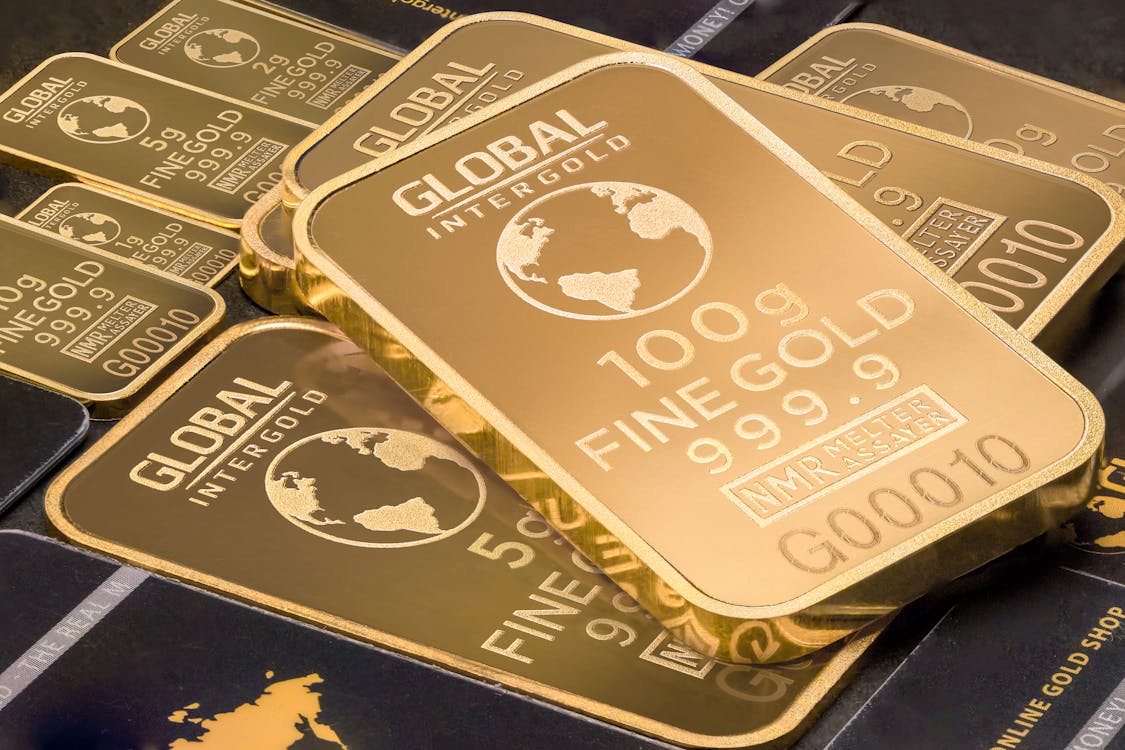
 Image Source: Pexels
Image Source: Pexels
For much of November gold has been on a tear and this week investors have sent it way up, punching past $2000. Will these giddy heights of over $2,000 be how gold chooses to see out month-end? At the time of writing we cannot be sure. Yesterday prices did soften ever so slightly but the drivers that have affected gold this month (and prior) are ever-present. In all likelihood gold took a bit of a breather thanks to FOMC comments suggesting the Fed would not look to start cutting rates until after Q1, next year. Currently, the ECB is odds-on to be the first central bank to cut rates, with the market pricing in a cut from the ECB in the first quarter of 2024, and the Fed in Q2 2024. When interest rates are low, it creates a more attractive environment for investors to buy non-yielding assets such as gold. Whilst we are very bullish that a gold price in excess of $2,000 will soon be ‘the norm’ it is very likely that today will see a routine round of profit-taking as investors cover their long positions and in doing so offset their positions with a sell order. Profit-taking or not, all the reasons as to why gold has been storming ahead still remain. Even while inflation appears to be faltering and the US economy is still doing well, there are still clear signs that we may witness sticky inflation and tepid growth. For traditional portfolios, the “stagflation” scenario—in which stocks experience price pressure but bond payouts decrease over time—can be fatal. And this is just one of many strong reasons why you need to hold gold in your portfolio. Gold is snapped up in times of low interest rates, high inflation, and global turmoil. And where are things at present? Central Banks are already forecasting when they will start cutting rates, but inflation is clearly still present across a number of industries, currencies are flip-flopping and we have a number of fires popping up around the world in the form of war and political posturing between nations. A stable world this is not.
Does a hold over $2,000 matter?
Psychologically, finishing the month above $2,000 is a big deal. It shouldn’t be, but it is. After all the $2,000 mark is just one price, in one currency, and gold is a global currency, traded around the world in a number of currencies and you might not even be buying in dollars. But dollars do still rule the world and the $2,000 price acts as a placeholder for those trading gold. Before you worry where gold will close today, or even in a year, we are reminded of a quote from the late and great Charlie Munger:
“The world is full of foolish gamblers and they will not do as well as the patient investors.”
Charlie Munger Steps Out
Obviously, Charlie Munger was no fan of gold or silver, stating that he had no interest in it. There is little interest paid by Berkshire Hathaway towards any kind of ‘alternative asset’ and such is the wide-spread mainstream respect for Charlie Munger and Warren Buffet that I suspect this approach has resulted in many institutional investors avoiding alternative assets such as gold and silver. But, there was once a time when Berkshire Hathaway stunned the world with a hefty physical silver purchase.
Back in 1998, the company released a press release that stated:
“The company owns 129,710,000 ounces of silver. Its first purchase was made on July 25, 1997, and its most recent purchase was made on January 12, 1998.During 1998, Berkshire has accepted delivery of 87,510,000 ounces in accordance with the terms of the purchase contracts and the remaining contracts for 42,200,000 ounces call for delivery at varied dates until March 6, 1998. To date, all deliveries have been made on schedule. “
As Charlie Morris explains,
“As rumours of their purchase spread, the price took off, only to give much back after the announcement a few months later…They sold their silver hoard at a modest profit and later regretted the trade, probably because it went against their ideology to “never bet against America” and their establishment credentials.”
Kissinger and Munger leave at the right time
Henry Kissinger also passed away this week, clocking out at 100 years old. Like Munger he was born into a world where gold was still king of the international monetary system. But also like Munger he hugely benefited from (and was partly responsible for) the dollar hegemony that arose as a result of the 1971 decision to unpeg the US dollar from gold. There is plenty one could say about both of these two men. Regardless of whether you agree with their approach to investment or politics, there is still much to be learned from them. Both Kissinger and Munger (through Berkshire Hathaway) were two of the biggest supporters of the superpower that is the US; Berkshire Hathaway is run with the ethos, “you don’t bet against America” and Kissinger was arguably one of the architects of the tower that the United States finds itself atop of, today. Both men appear to have bowed out just at the beginning of what is about to be the next shift in the global political and economic order. As Marc Faber said back in November:
“…we have a world that is becoming divided between the wealthy, developed Western countries under the hegemony of the United States and their allies like Canada and Australia, UK and Europe, and then you have the BRICS countries that are becoming larger and have economically an increasingly large weight in the world and politically more influence,”
More By This Author:Gold, A Seasonal Rally And The Future Of Money
Gold Pops As Credit Crunch Looms
Patrick Karim, Charts And Gold’s Next Breakout
















